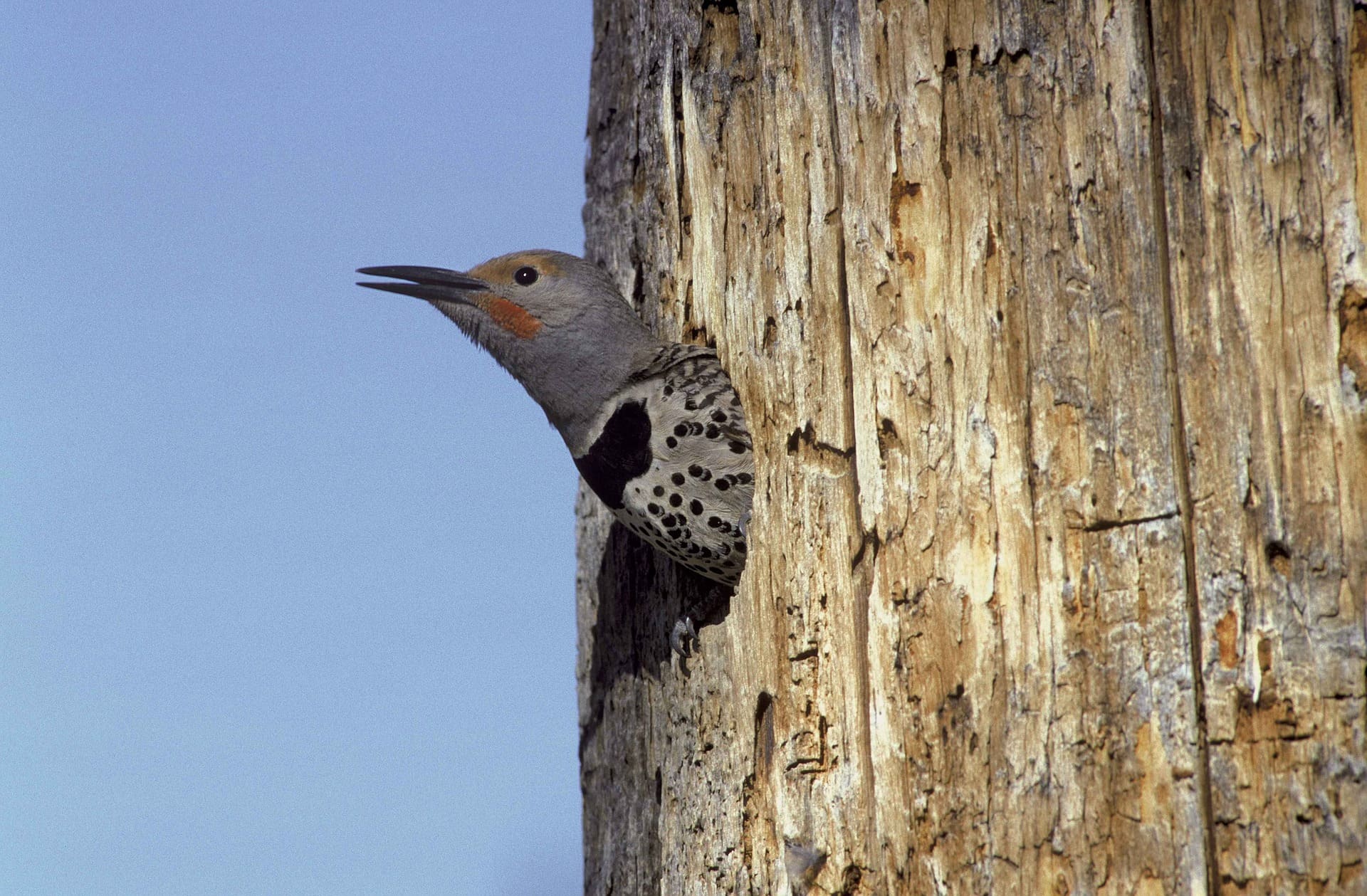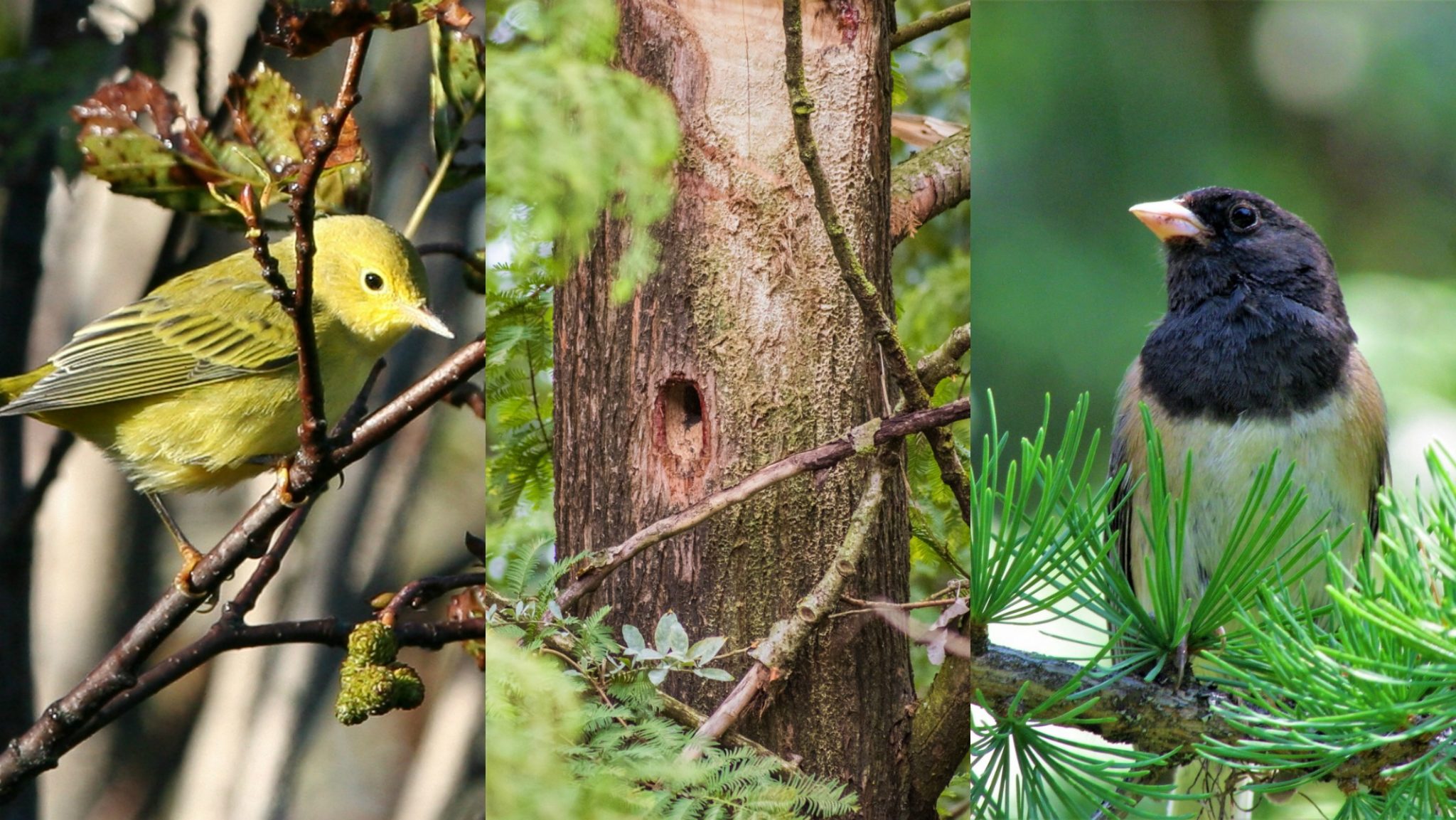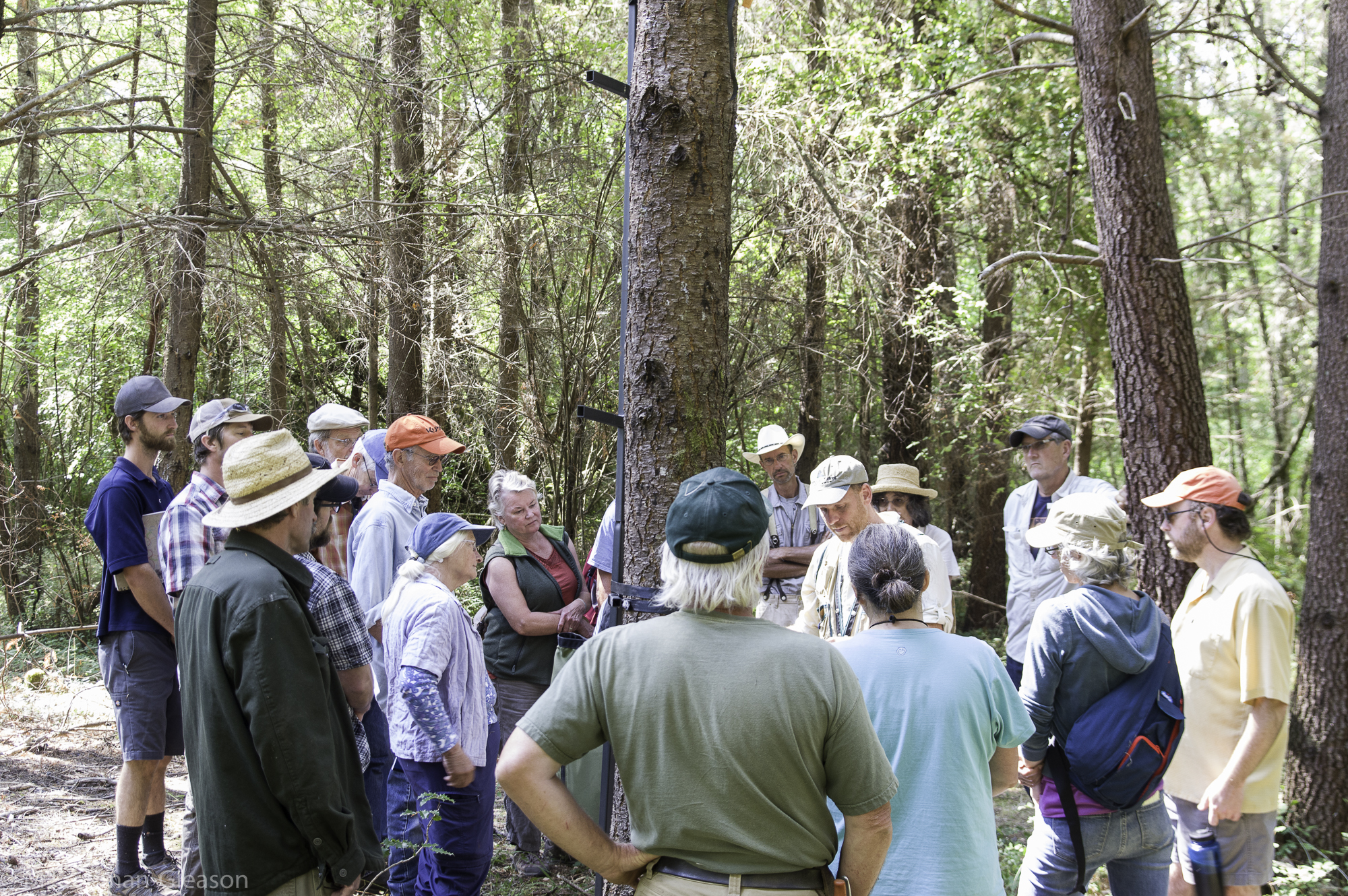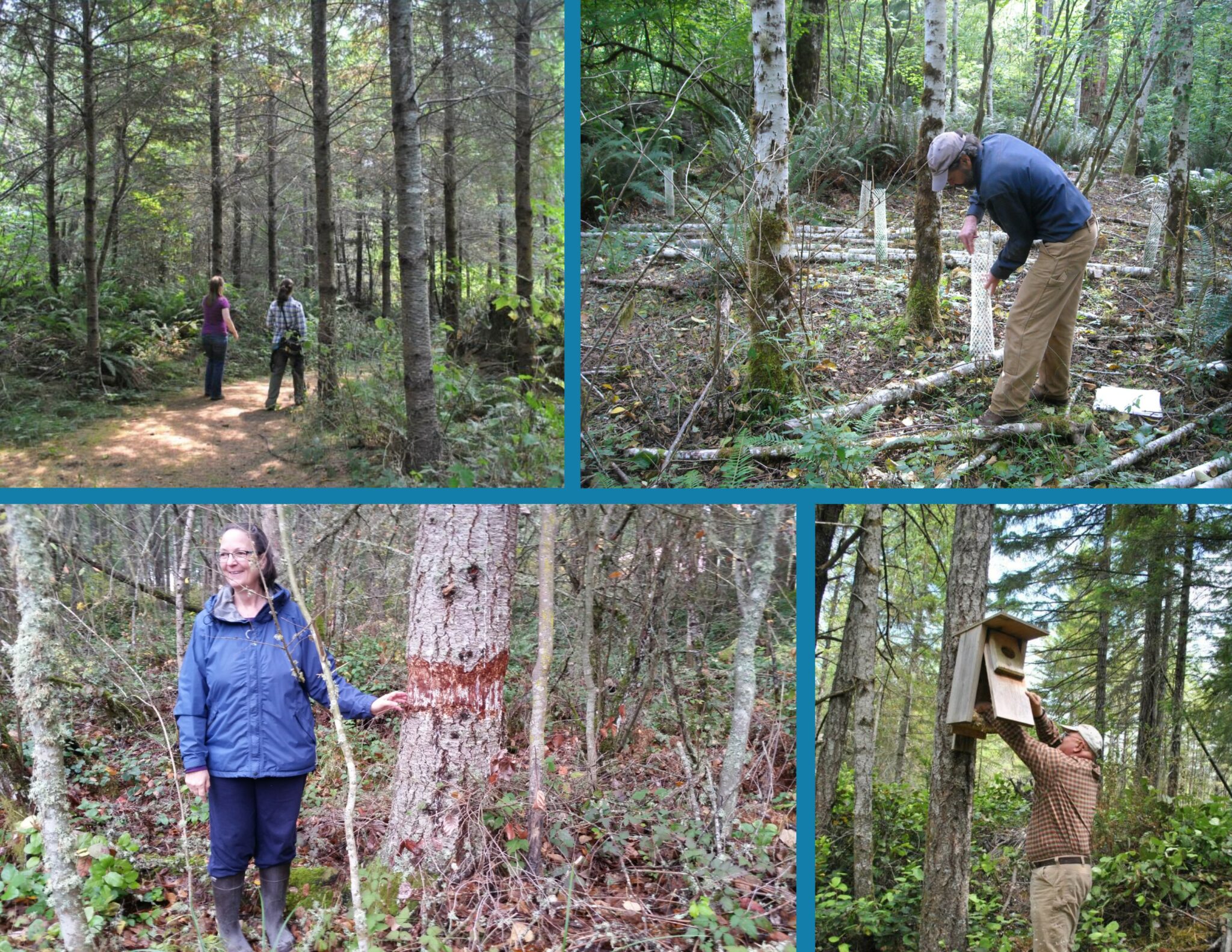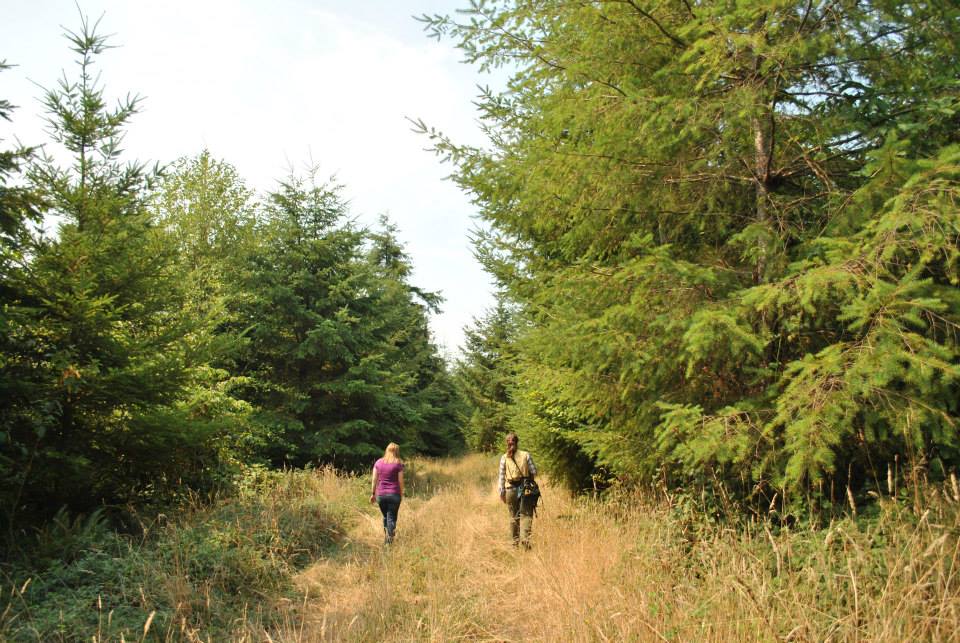Snags, large down logs, and big decadent trees provide food and shelter to more than 40 percent of wildlife species in Pacific Northwest forests. They are important structures for cavity-dependent birds and small mammals, food sources for woodpeckers and other foragers, and slowly release nutrients into the ecosystem with the help of decomposer critters.
Forest restoration with birds in mind
When carrying out stewardship activities to help grow ecologically-complex and productive forests, there are things you can do to ensure your efforts are welcoming to our feathered friends.
Woody biomass trainings to reduce risks in the San Juan Islands
Landowners in San Juan County are addressing the unique challenges of managing island forests for both ecological health and economic viability. NNRG and our partners have worked with many island forests, conducting one-on-one site visits, developing management plans, hosting tours and classes. Increasingly, landowners have sought instruction on how to manage their overstocked stands for improved forest health. They […]
Tools to inform forest stewardship decisions
Many forest owners want to reap a diverse harvest from their land: ecological, social, and financial benefits, all from the same forest. The question they ask: How to achieve these good intentions? Fostering a future grove of old-growth or restoring an oak woodland may mean thinning out extra trees through commercial harvest. Creating a home for pileated […]
Promoting decision making tools for informed forest stewardship
Giving landowners the decision-making tools they need to become informed forest stewards Landowners can encounter barriers that prevent them from taking an active approach to stewarding their forests. We interviewed landowners to understand their stewardship concerns, their sources of information, and the factors that influence their management activities. Landowners make decisions based on their understanding of their […]

